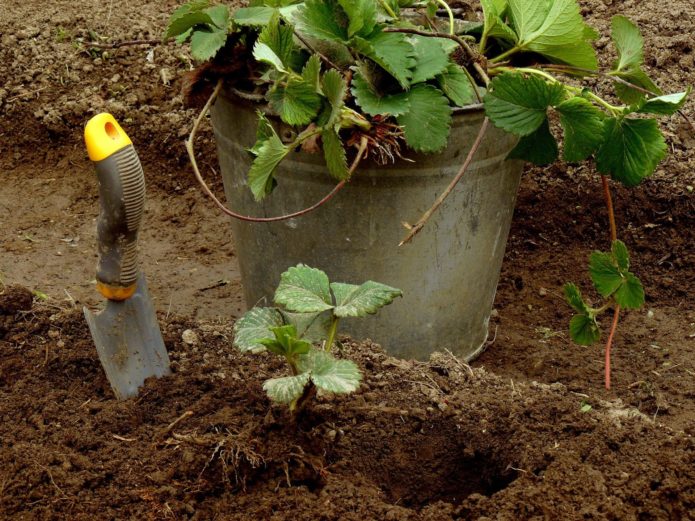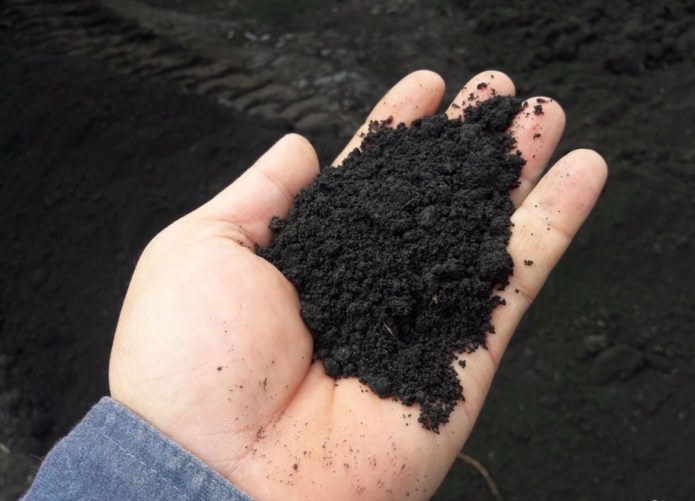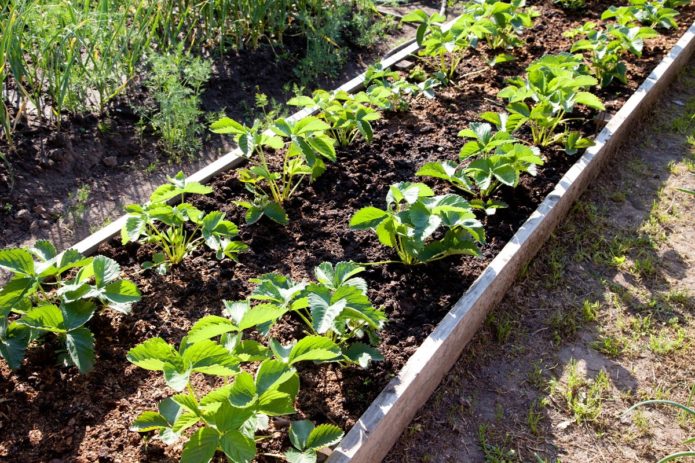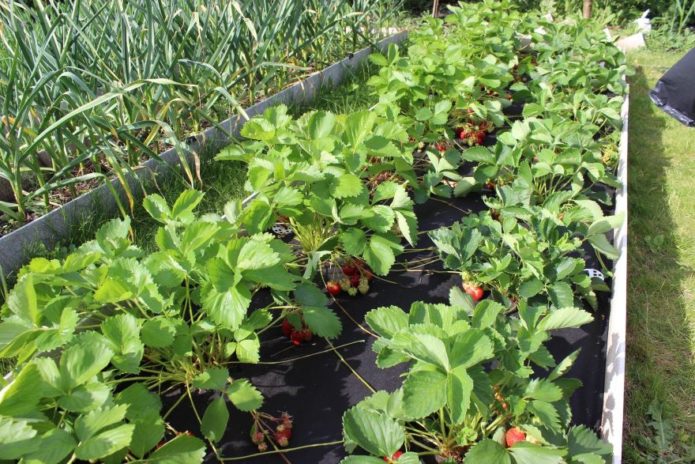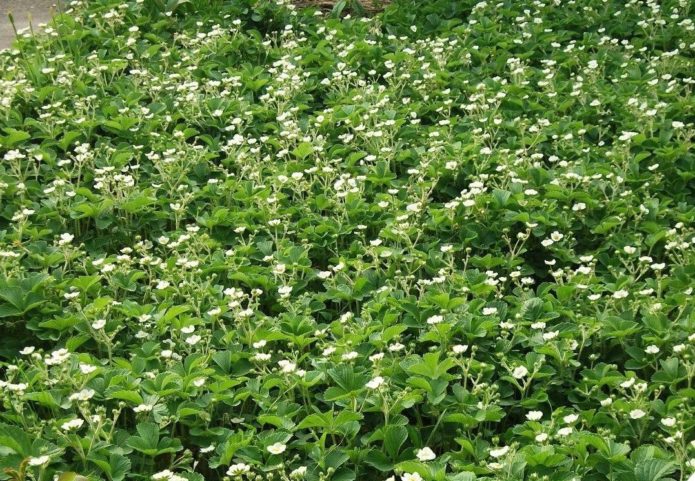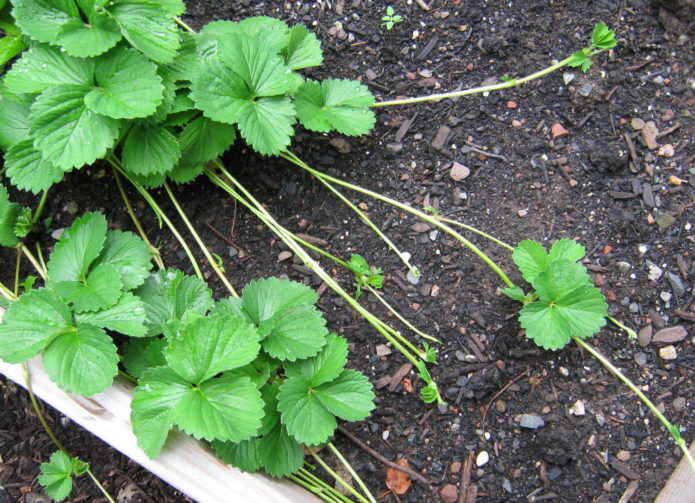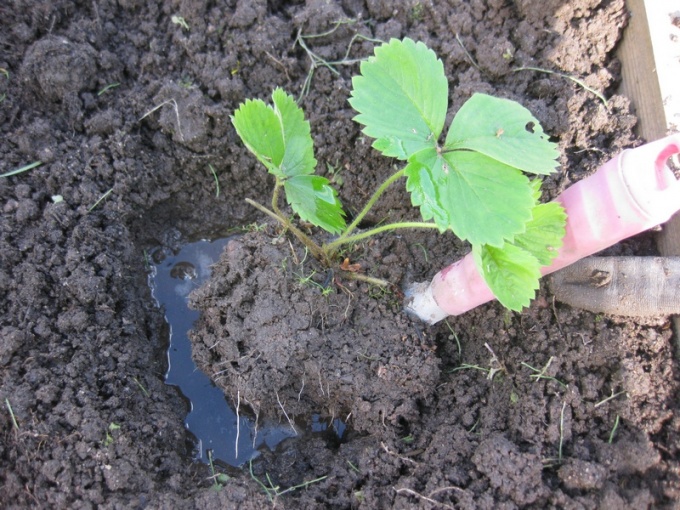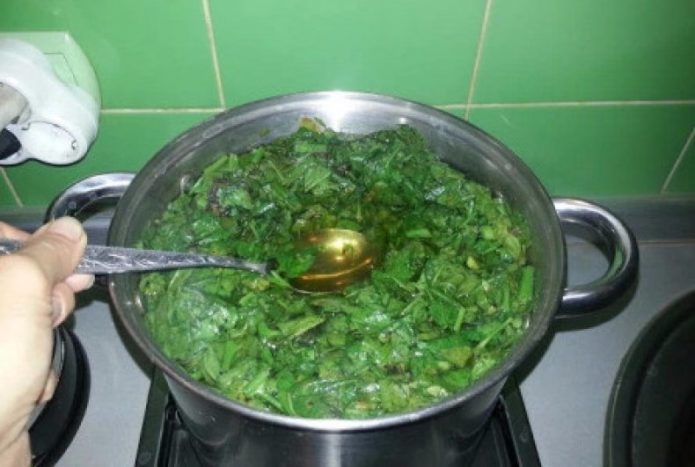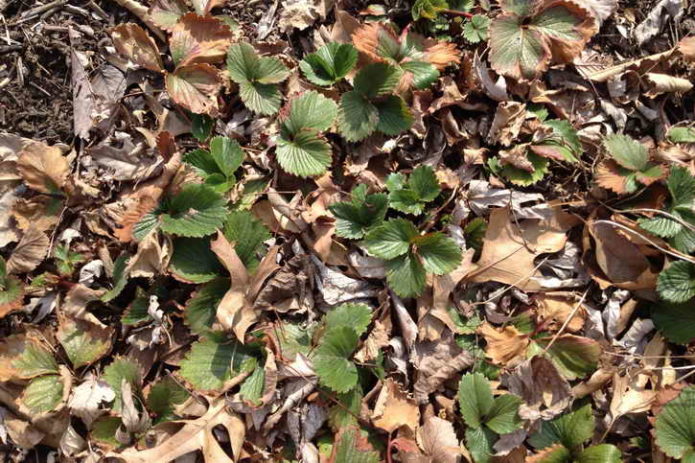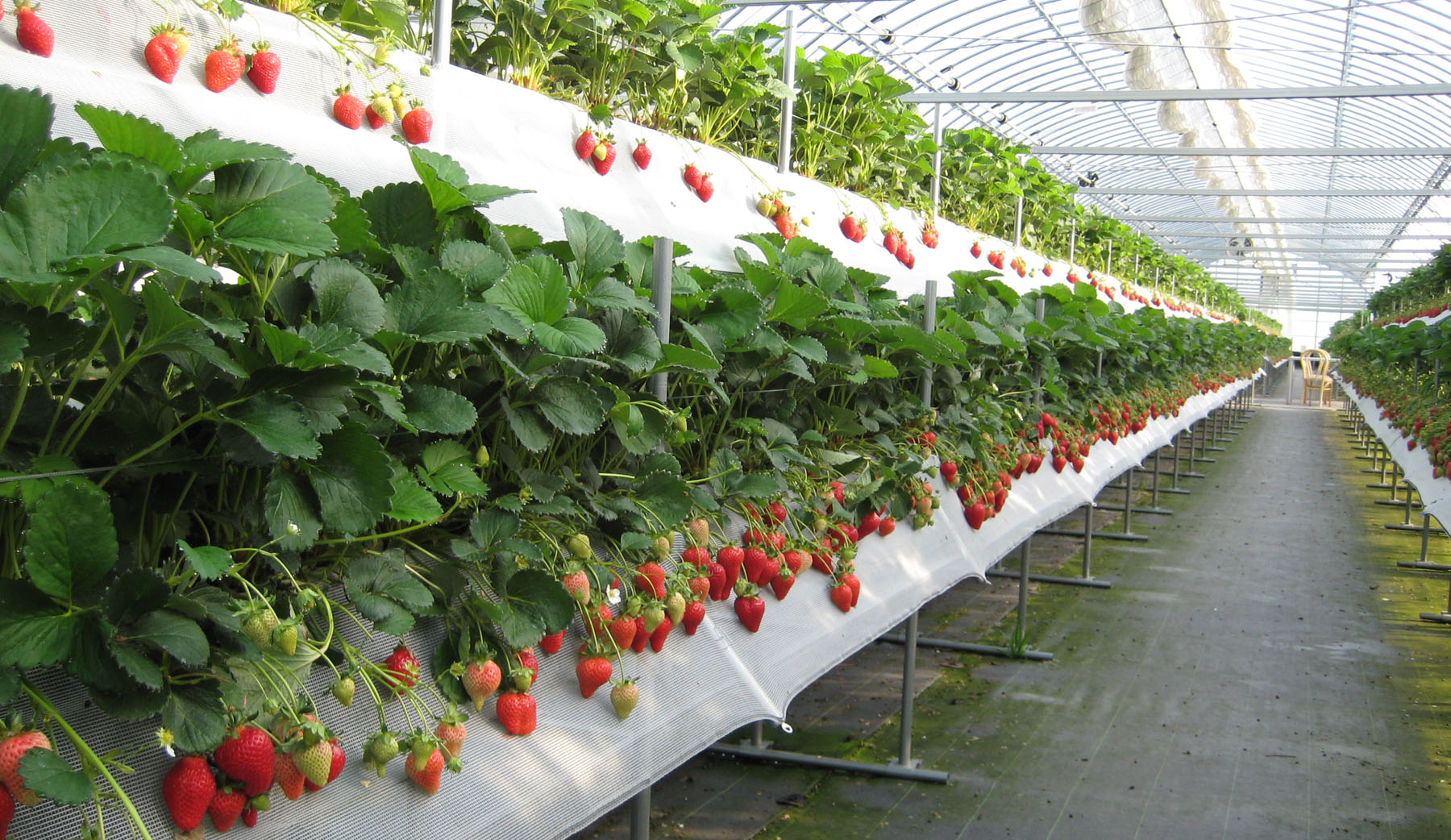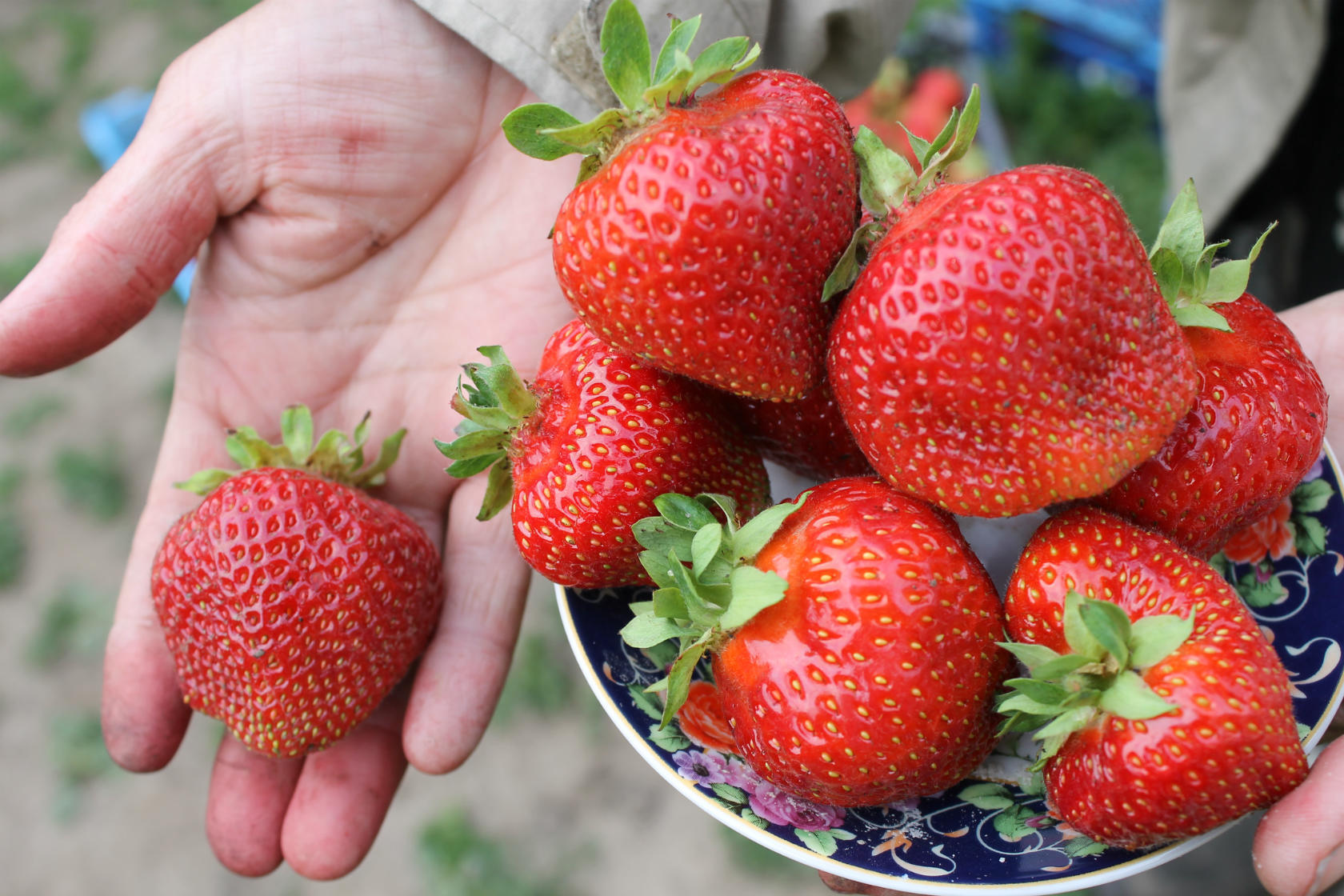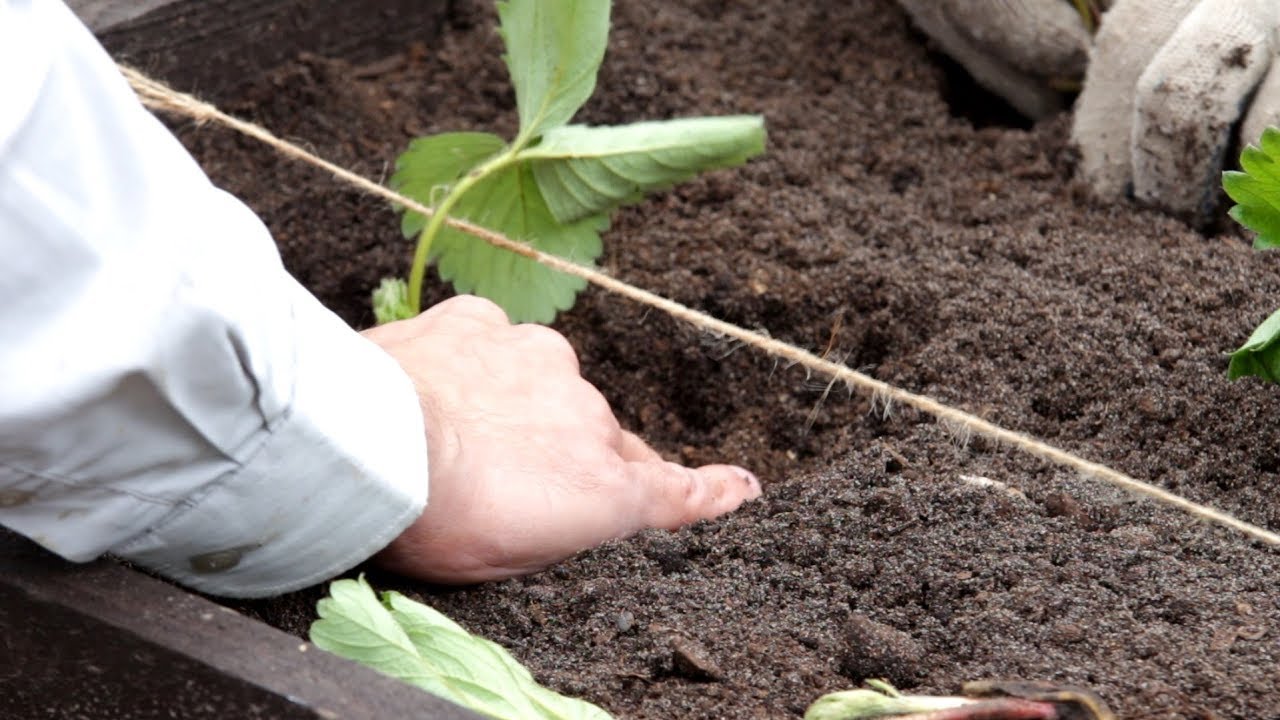Strawberries live in one place for 3-4 years, after which their vitality dies out, fruiting decreases and therefore it becomes necessary to establish a new plantation. If the gardener is satisfied with the variety, there is no point in buying planting material: you can correctly propagate and plant your strawberries. Of course, this culture is not for the lazy, it requires constant care, but replanting itself is not difficult.
Content
Why is it necessary to plant strawberries and when to do it
When they say "strawberry", they most often mean garden strawberries. And no matter how much scientists try to get amateur gardeners to name the plant correctly, they fail. It just so happened historically that we used to say "strawberry", although strawberry is a slightly different, albeit related plant. So why do you have to plant strawberries?
Everything is very simple: this perennial plant actively develops in the first couple of years, gives the maximum yield in the second and third years of life, and then begins to age. Yields are declining, diseases accumulate, and leaving strawberries in one place for more than 4 years does not make any economic sense. Over time, the bushes stick out more and more from the ground, they lack nutrition, the berries become smaller.
In addition, planting strawberries is required if you want to expand the plantation or move it to another place. Thus, by transplanting, they achieve rejuvenation of the plantation and the resumption of normal yields of large berries.
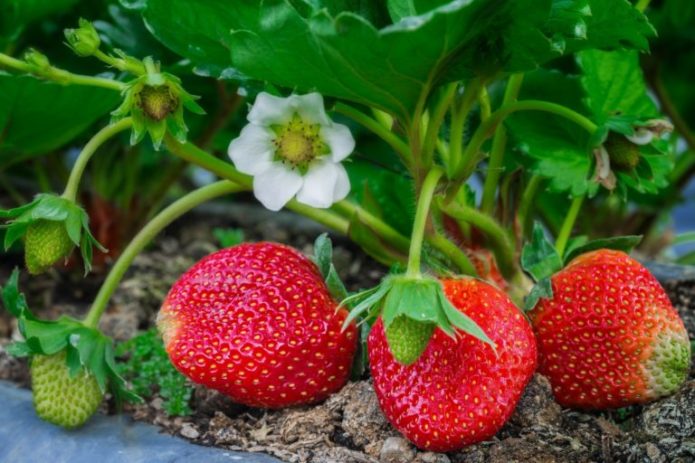
For the harvest to be rich and the berries to be large, strawberries must be planted every 3-4 years
Both ordinary strawberries and remontant ones are planted, and this procedure in both cases differs little. But just taking and replanting an old bush is a waste of time. Garden strawberries are planted with a "mustache" or, in extreme cases, relatively young large bushes are divided. It is not worth replanting bushes older than two years of age.
It is not possible to transplant strawberries at any time, but the gardener has a choice. This is done in spring, late summer after fruiting (starting in August) or in autumn. In June-July, the culture suffers a very painful transplant, especially when blooming, and even more so with berries.
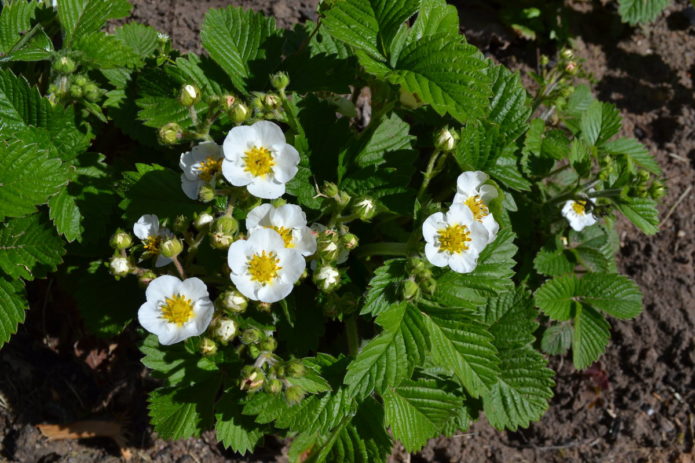
Even if the strawberries just have buds, and even more so if the flowers have opened, you should not plant it
Spring transplant is possible after warming up the soil at least up to 6-8 aboutC. In the middle lane, this situation develops by the second half of April, and until the end of the first decade of May, strawberries take root very well. If the soil has warmed up earlier, it is better to start transplanting without waiting for the onset of hot days. After the spring transplant, the bushes completely take root by winter, mature and easily tolerate the cold. However, on the bushes transplanted in spring, this year there will be almost no berries.
If you plant strawberries in the summer, immediately after harvesting - at the end of July or August, the strawberries will also have time to root well and will give a normal harvest next year. However, it must be understood that during the fruiting period the bushes have become weakened, therefore the summer transplant requires strict adherence to all the rules. It should not be carried out in hot dry weather or, conversely, during rain. The best time to transplant is the evening before cloudy days. After a summer transplant, strawberries will literally require daily supervision and care.
By September, the bushes are already fully recovering after fruiting and, if transplanted no later than a month before the onset of frost, they easily take root in a new place, and bear fruit well next year.
October is already a risky period for transplanting: frosts can come unexpectedly, earlier than usual.
Depending on the region, a slight adjustment to the timing of the transplant is possible:
- in the southern regions, work can begin at the end of March and be carried out until October;
- in the north, spring transplanting is optimal: in the fall, strawberries do not have time to take root, and summer work must be completed by mid-August.
Garden strawberries are divided into early, medium early and late fruiting periods. The ripening time of the berries does not in any way affect the technique of planting strawberries, but makes adjustments to the timing: early strawberries can, of course, be planted earlier, and in the case of late ones, you need to wait longer until fruiting ends.
Preparing a place for strawberries
Strawberries are very demanding on the composition and fertility of the soil, and so that the work on planting is not in vain, you need to try hard when preparing the site. This berry grows well on cultivated sandy loam, loam and black soil. Planting it in the sand means adding a lot of unnecessary worries to yourself. On clay, strawberries will never give good yields. Groundwater that comes closer than a meter to the surface is definitely not suitable for this crop.
Strawberries love slightly acidic soils (with a pH of 5.5 to 6.0), but if the acidity in the garden bed is neutral, it will also work (if possible, when digging, it is worth adding high-moor peat). All rhizomes of perennial weeds must be carefully removed during deep digging: it will be much more difficult to do this later.
When digging, large doses of fertilizers are also applied:
- organic - for each square meter at least two buckets of well-rotted manure or compost, a couple of handfuls of ash are also added;
- if the soil is neutral, take potassium from mineral fertilizers (potassium sulfate or potassium magnesium, no chlorides) in the amount of 20-30 g / m2;
- superphosphate is added at the rate of 20-30 g / m2.
The best berries are obtained in well-lit areas, but light shading for several hours a day is not an obstacle to planting strawberries. The plantation must be reliably protected from cold winds. A not very flat area needs to be leveled, although the slope is not more than 2about permissible, especially if it is a southwestern slope. In the lowlands, strawberries suffer from frost, in higher places they like it better.
In young gardens, strawberries can be placed in the aisles: while the trees grow and give shade, the strawberries will need to be removed from this place.
White cabbage, salads, radishes, onions, garlic, peas can be the predecessors of garden strawberries. You cannot plant strawberries after nightshade crops, raspberries and blackberries.
In any case, if there is time, it is worth sowing siderates (oats, lupines, peas, etc.) on the future strawberry garden. These herbs, without waiting for the seeds to appear, are dug up together with the soil, while simultaneously adding mineral fertilizers.In this case, it will be possible to take much less manure: it is cheaper, and prevents the plantation from clogging up with weeds from seeds found in not very old manure.
Of course, the garden bed must be dug up long before the strawberries are planted so that a biological balance is established in the soil. On the day of transplantation, it is only slightly loosened with a rake.
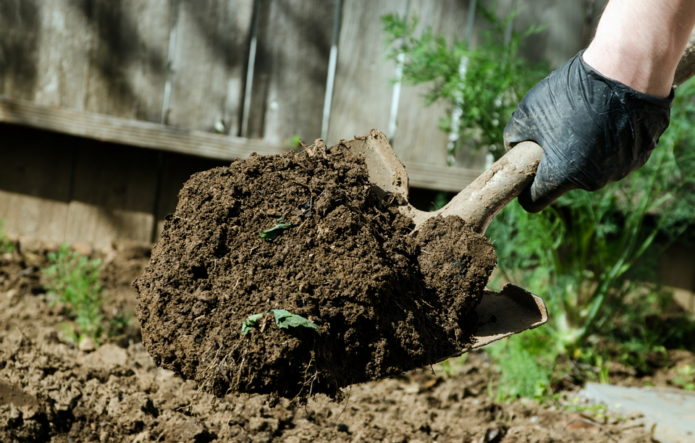
A bed for strawberries is dug up at least two weeks before planting, removing all weeds and random inorganic debris
Strawberry planting patterns
There are many options for placing bushes in a strawberry garden. The provision of each bush with moisture, nutrition and sunlight depends on how free the plants feel. The most popular are the following strawberry planting schemes:
- separate bushes. The garden bed is made of any size convenient for serving strawberries, and the bushes are planted at distances of 40-50 cm from each other. With this scheme, the illumination is maximum, the berries grow large and sweet, but there is no need to talk about saving space;
- in rows, between which a distance of about 60 cm is left, and in each row bushes are planted tightly - 15–20 cm apart. In this case, less space is consumed, there is also less opportunity for weeds to grow, but the berries can be smaller;
- carpet. This method is for busy people. It requires less labor, but the quality of the berries will also be lower: the bushes interfere with each other, fighting for food and light. With this method, the arrangement of the bushes during planting is about 20 × 20 cm, and then the plantation is overgrown with a "carpet" of strawberries, and new bushes prevent the growth of weeds, creating their own microclimate.
Seating technique
The usual way of breeding strawberries, which allows you to completely rejuvenate the plantings, is with a mustache, while in the first year you will hardly be able to get berries. According to the second method - by dividing the bush - fruiting will be in the first year, but in this way you will have to plant strawberries more often.
Dividing the bush
The method of propagating strawberries by dividing the bush is used when there are no good whiskers or there are very few of them. Some varieties produce little whiskers at all. You can divide the bush at the age of 3-4 years, but you need to understand that even parts of it will already be quite old, so it is better to divide two years. Dividing the bush is best done at the end of summer. For this, strong, healthy bushes are chosen, on which good yields were noted. The work progress is simple:
- A bayonet shovel (preferably with a rectangular blade) makes cuts in the soil from all four sides of the bush to a depth of 10–12 cm, retreating from its center 10–15 cm.
- Carefully take out the bush along with a lump of earth.
- After that, the earth is gently shaken off, trying not to damage the roots. All the earth will not be shaken off, so they place the bush in a basin of water.
- In water, the bush is divided easily: it is neatly, manually (usually even a knife is not required) divided into rosettes with its own roots. If the roots are small, this fragment by itself may not take root. Sections with developed light roots are chosen.
- Remove old, decayed and dried roots. Cut off at least half of the leaves so that the roots have enough strength to feed and water the remaining few pieces. If flowers are found, they are also removed.
- The divisions are planted in a new place according to the chosen scheme, making holes 10–15 cm deep. When planting, straighten the roots and in no case deepen the growth point.
- Strawberries are well watered, the space between the bushes is mulched with a thin layer of humus, peat or chopped straw.
Video: dividing a strawberry bush
Mustache planting
If you have enough mustaches, you can plant them almost at any time, starting in late July. From each mother bush, you can get more than a dozen mustaches, but we must remember that the strongest are those that grew first from the bush. In addition, the best mustaches are those obtained from young (1–2-year-old) mother bushes. Only those mustaches are planted that are already well rooted in the old bed: if you gently pull the rosette of leaves with your hand, the bush should not easily be pulled out of the ground. The operation is very simple:
- With pruning shears, strong young plants are cut from the mother bush, preferably a week before transplanting.
- With the help of a shovel or small shovel, the transplanted plants are dug out with a clod of earth.
- They are planted in a new place at the same depth, making sure that the growth point is not deepened.
- The soil is well watered and mulched.
If good whiskers are not enough, you can plant 2-3 relatively weak ones in one hole. With good care, they form one joint bush and will not interfere with each other.
If the seedlings are not completely healthy, things get complicated. Such mustaches will have to be freed from the soil and their roots immersed in hot water (about 45 ° C) for 10-15 minutes. Planting a mustache with bare roots is carried out in the same way as fragments of a divided bush, but they will take longer to take root.
If the weather is hot, sunny, such plants must be shaded with newspapers, spunbond or simply picked grass.
Caring for transplanted strawberry bushes
The planted strawberry bushes are weakened, and at first, at least 2-3 weeks, they need to be vigorously looked after. Strawberries should be in moist, loose soil. Mulching partially solves the problem, but on dense soils, you may even have to periodically rake and loosen the mulch so that the roots get more oxygen. In case of dry weather, plantings will need to be watered every 1–2 days.
Weakened bushes can easily pick up any sore. Many gardeners, shortly after planting, spray strawberries with 1% Bordeaux liquid or Fitosporin-M solution (1 tablespoon per bucket of water). If you don't want to get involved with "chemistry", you can prepare an infusion of tomato tops. For this:
- 1 kg of tops is poured with a bucket of hot water.
- Let stand for several hours and bring to almost a boil.
- After cooling down, add 100 g of laundry soap and dilute by half.
Whether the strawberries have taken root in a new place will become clear in 10-15 days. If she looks healthy, the leaves have not wilted, and new ones appear from the point of growth, everything is in order, but the care will continue constantly. Only watering can be reduced and the caps that protect the bushes from the sun can be removed. For the first winter, strawberries will need to provide a good snow "blanket":
- if the region is famous for its stable snow cover, then nothing else is needed, you just need to scatter some twigs around the plantation for snow retention;
- if there may be problems with snow, the strawberries must be covered with coniferous spruce branches, straw or spunbond.
Next year, the planted strawberries are already being looked after like an adult:
- cleaned of dry and diseased leaves in spring;
- loosen the soil, renewing the mulch, and monitor the moisture;
- watering strawberries often, but in moderation, weeds are removed as they appear;
- top dressing on a well-prepared bed is applied in the second year. In the spring, emphasis is placed on nitrogen, complex fertilizer is given after harvesting, and in the fall they are fed with organic matter and ash;
- constantly monitor the possible occurrence of diseases and the appearance of pests, carry out preventive treatments.
Features of planting remontant strawberries
There is a traditional strawberry that bears fruit once a season and a remontant. The latter is becoming more and more popular: it bears fruit from the end of May and ending with the onset of the first frosts.
Not all gardeners believe that remontant varieties are better, but the prevalence of this variety of garden strawberries in our gardens is growing rapidly.
The main difference in planting remontant strawberries is that they do it much more often. The bushes that bear fruit all summer long deplete the soil so quickly and grow old themselves that remontant varieties have to be planted every two years, in extreme cases - three. And since strawberries cannot be transplanted in the fruiting stage, only early spring and autumn remain for the procedure. It should be borne in mind that there are varieties that bear fruit until mid-October, or even longer. And mid-October in the middle lane is the deadline for transplanting strawberries. Therefore, it is necessary to interrupt the fruiting of the transplanted bushes by removing the peduncles and ovaries.
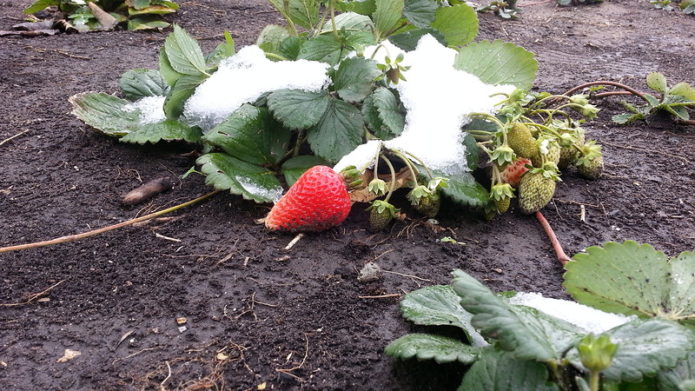
There are varieties of remontant strawberries that bear fruit until mid-October and longer, their fruiting has to be interrupted for transplanting
There are beardless varieties of remontant strawberries, which have to be planted only by dividing the bush. This is done in the same way as with regular strawberries. Planting patterns can be from 40 × 30 to 80 × 30 cm, depending on the vigor of the plants and large-fruited. It is better to plant the remontant strawberry bushes in this way in the spring, before the buds appear. If you plan the procedure for the fall, then you will have to pick the berries, which you could get from the strawberries.
Video: reproduction of beardless remontant strawberries
If the variety produces a sufficient number of mustaches, try to plant the strawberries with a mustache. True, for the reproduction of remontant strawberries with a mustache, you still have to sacrifice part of the harvest, since the plant will not pull both fruiting and the full development of the mustache. The procedure is as follows:
- In August, all flowers are removed from the bushes from which the mustache is supposed to be taken.
- In advance, even before this procedure, a small groove is made at the edge of the bed, where the mustache is then laid, and only the first from the mother bush.
- When the subsequent whiskers go from them, they are immediately cut off.
- Then - as usual: they take care of the shoots (water, loosen), promoting their rooting.
- When the plants are firmly rooted, they are cut off from the mother bush, and after a few days they are planted in a new place.
Strawberries have to be planted every few years (ordinary varieties are less common, remontant more often). Without this, normal fruiting is impossible. Strawberries are a laborious crop, but it is impossible to imagine a summer cottage or garden plot without this delicious berry.
